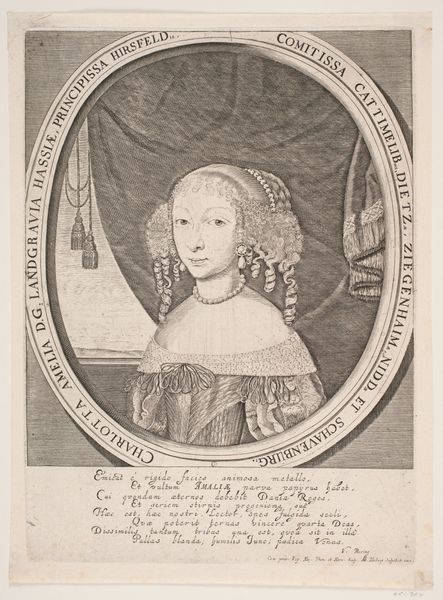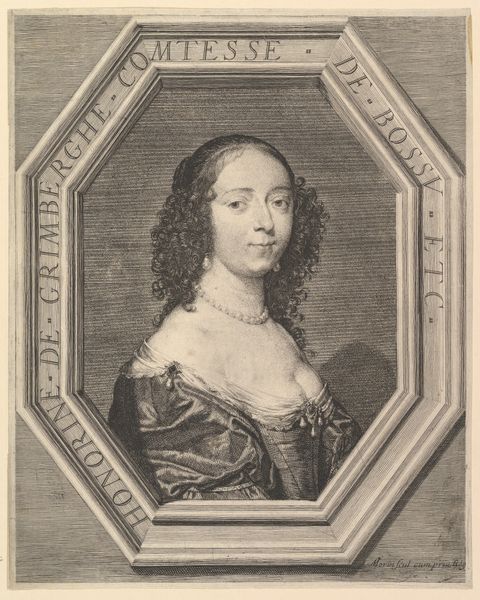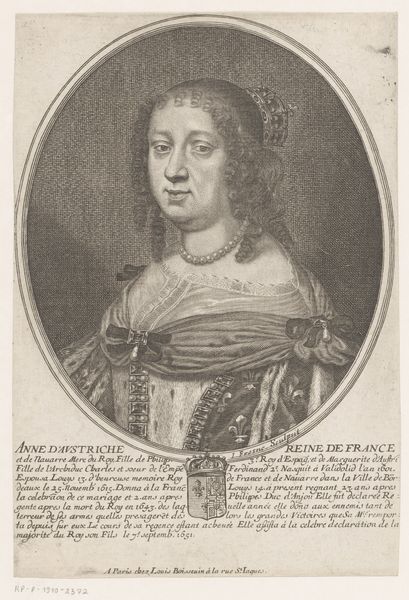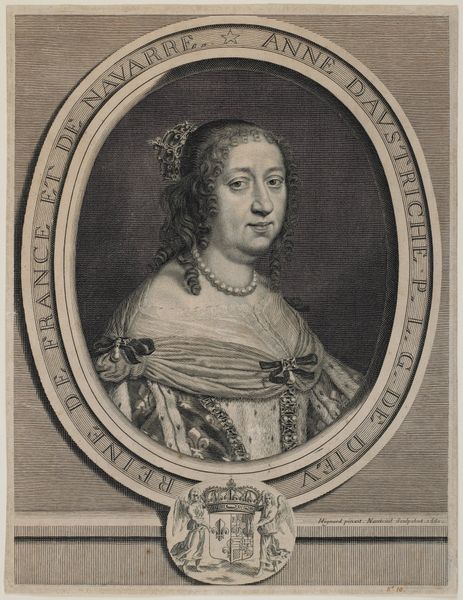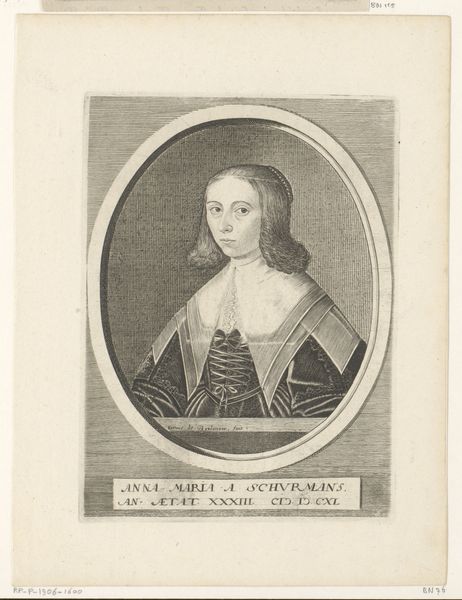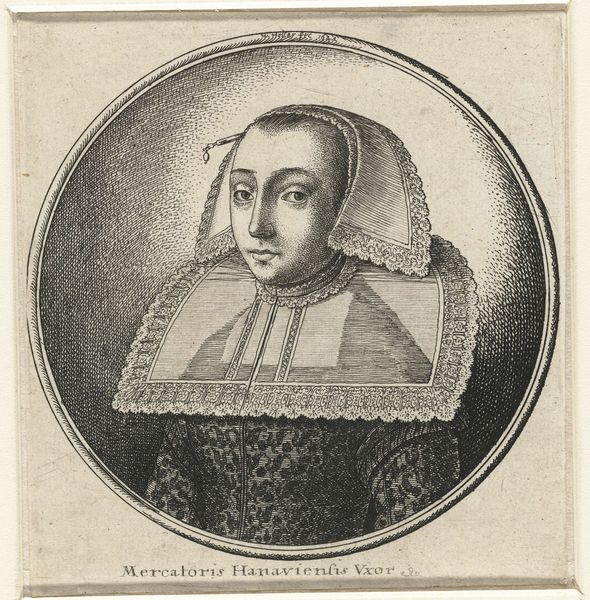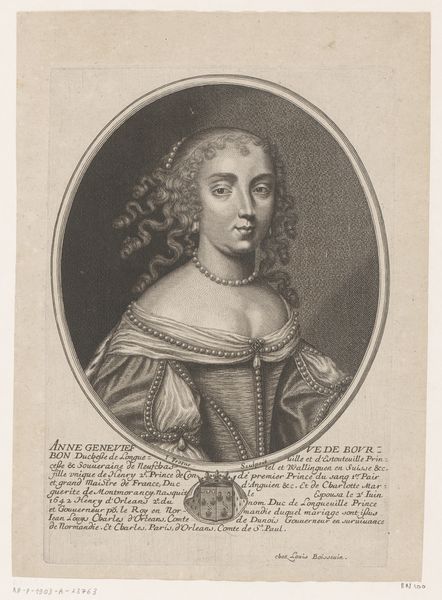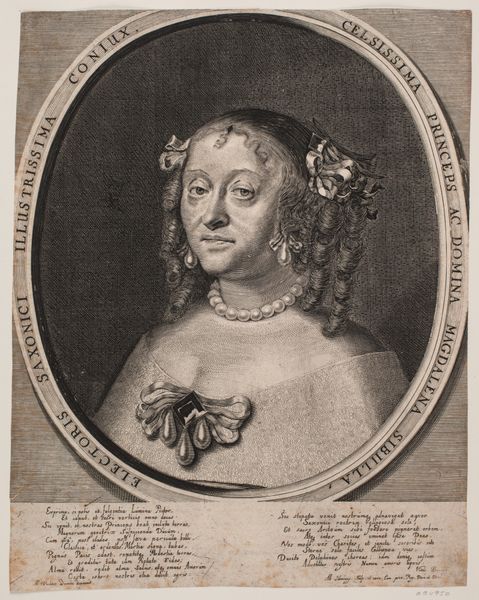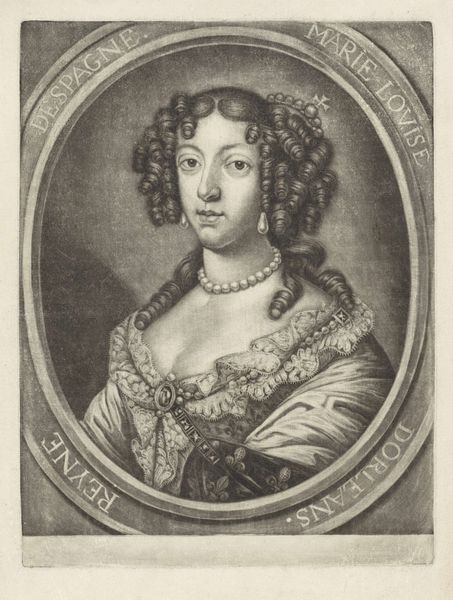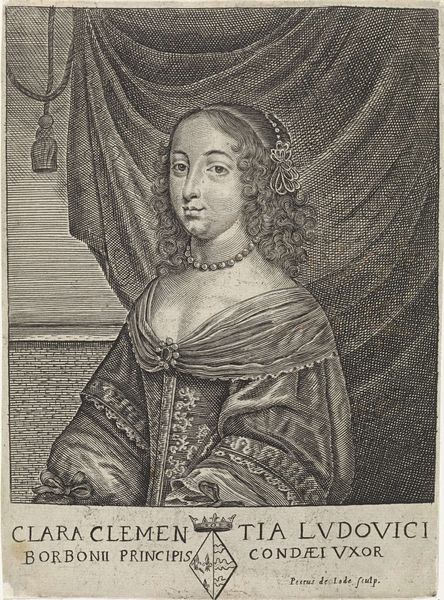
print, engraving
#
portrait
#
baroque
# print
#
history-painting
#
engraving
Dimensions: 368 mm (height) x 268 mm (width) (bladmaal)
Editor: So here we have a portrait of Charlotte Amalie as a princess, made sometime between 1665 and 1669 by Albert Haelwegh. It's a print, an engraving to be exact. What strikes me most is the intense detail achieved through the engraving process, especially in the rendering of her hair and clothing. How do you read this work? Curator: I'm particularly drawn to understanding this engraving within its material context. It’s an artwork meant for reproduction. Prints like this served a crucial function, circulating images of power and nobility, and in doing so reinforced the social hierarchy. The work becomes less about Charlotte Amalie herself, and more about the statement of status the image produces and distributes. Consider the labour involved - the engraver's skill translating likeness and status into a repeatable matrix. Editor: That's interesting! I was so focused on the artistry. The fact that it was reproducible almost makes it…propaganda? Curator: In a way, yes. These prints functioned as visual propaganda, standardizing a certain image of royalty. Think about the distribution networks - who had access to these images, and what message did they receive about Charlotte Amalie’s position and power? And how does the choice of printmaking as a medium - a traditionally ‘lower’ art form - interact with the elevated status of its subject? Editor: So, it's not just about the ‘who’ is in the portrait but also ‘how’ it was made and ‘who’ saw it. That makes me think about the original purpose and intention behind it all. Thanks, that's given me a lot to think about! Curator: Exactly. Considering the materials and processes used broadens our understanding of its cultural function beyond simple aesthetics.
Comments
No comments
Be the first to comment and join the conversation on the ultimate creative platform.
